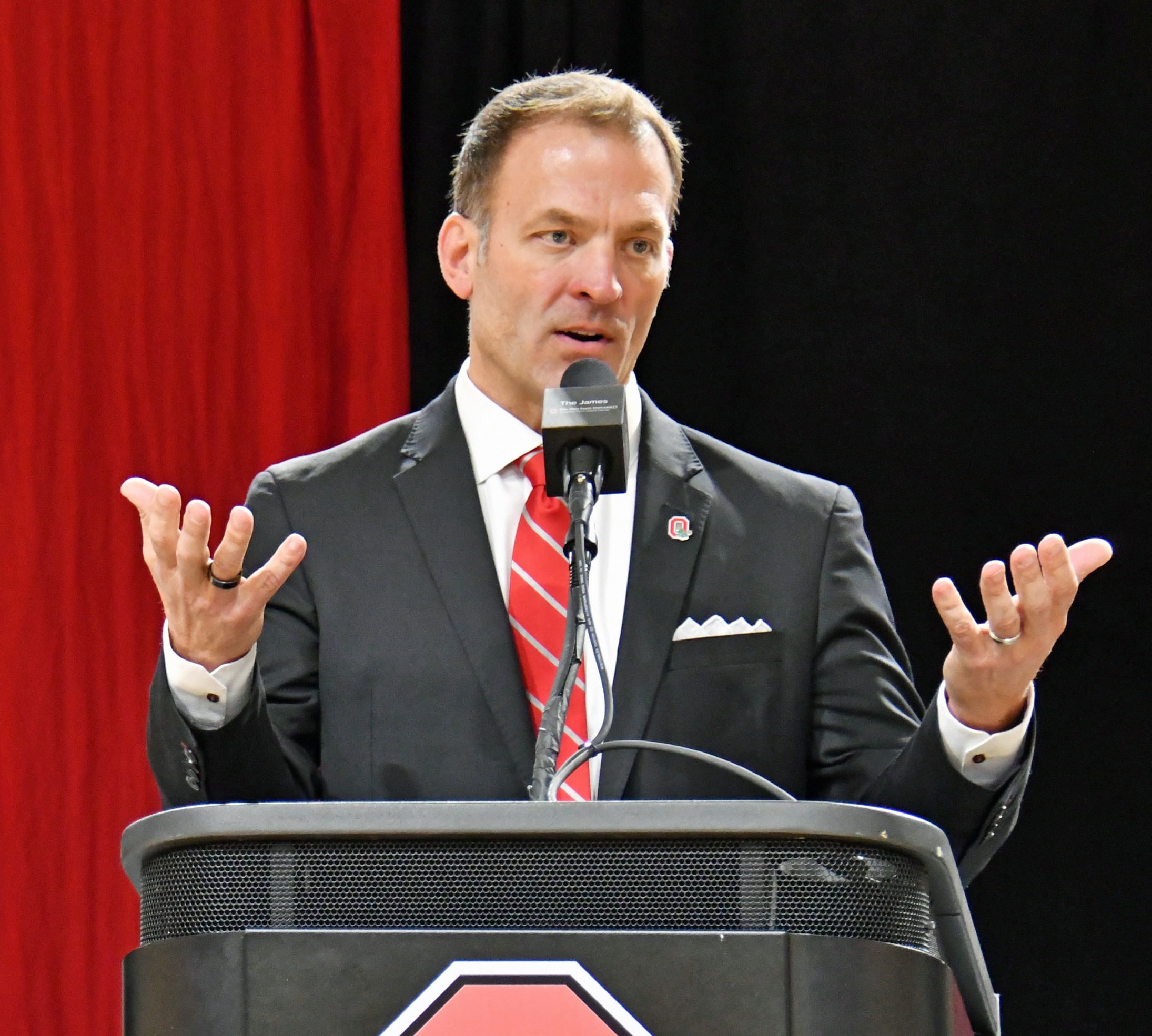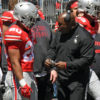
Ohio State has long been known for its rich football tradition, which dates back 134 years and includes eight national titles, 39 Big Ten championships and seven Heisman Trophy winners.
A major player in the Buckeyes’ storied history is iconic Ohio Stadium, the 102,780-seat venue that has served as the home of Ohio State football for the past 102 seasons.
While “The Horseshoe” has been a college football relic on Ohio State’s campus for over a century, the increasing commercialism of the sport has raised questions over whether or not the stadium will be able to keep its naming rights as time rolls on. It’s a dilemma that has even stumped new Ohio State athletic director Ross Bjork, who said he is unsure if he and his administration will ever look into changing the naming rights of the stadium, or when that could happen.
“Maybe. Maybe,” Bjork told The Toledo Blade on July 13 when asked if there could ever be a “tasteful manner” to sell the naming rights to Ohio Stadium. “Obviously, there’s a lot of historic value in that and what that means. If you go back to how they raised the money to build the stadium, every county contributed, and they did not want to take away from state dollars or tuition dollars.
“If that ever has to get put on the table, it’s the same conversation. At this point in time, you can never say never on anything. You have to put everything on the table, and then you evaluate it and make the best decision for the institution.”
Ohio Stadium has been the name of the Buckeyes’ venue since it opened its doors in 1922, and, like Bjork alluded to, the stadium was fundraised not by taxpayer dollars, but by donors across the state who raised nearly $1.5 million to the effort, equal to roughly $28 million today.
Bjork did not go into specifics on how or when a potential sale of Ohio Stadium naming rights could come about in the future, but he did say that he wants to walk the fine line between keeping up with the ever-increasing demands for change in college athletics and preserving the history and tradition of Buckeye football.
“I always think of a phrase: Let’s make sure we protect tradition, but not think traditionally,” Bjork said. “How do we take that ideal and monetize it, commercialize it in the right way, yet know that we have this economic engine that we have to feed, and it’s only going to grow and we’re only going to have to find more (revenue)? There’s always a tasteful way that you can integrate sponsors — commercialization, if you will — where it’s not putting it in everybody’s face.
“Always protect tradition, but don’t think traditionally about innovation and modernization. And I think you just have to be transparent and say, ‘Hey, we’re in a revenue-based enterprise, now more than ever. If we’re going to peel away band-aids, let’s start ripping them off sooner rather than later and get to a place where we’re transparent about everything. We state our case, we honor tradition, knowing that we have this economic engine that’s not going to slow down.”
Bjork did offer a more concrete opinion on another important tradition involving the team, though, that being the date of the Ohio State-Michigan rivalry. While an elimination of Big Ten divisions sparked conversations about moving The Game up in the season to avoid the two teams playing on consecutive weeks, the last being the Big Ten Championship game, Bjork suggested that potential change to the rivalry would be unlikely under his leadership.
“I think it’s too iconic,” he said. “If it ever gets hung up in those dynamics, you’d look at it. But there would have to be a lot to play out in order to move off that last weekend.”








